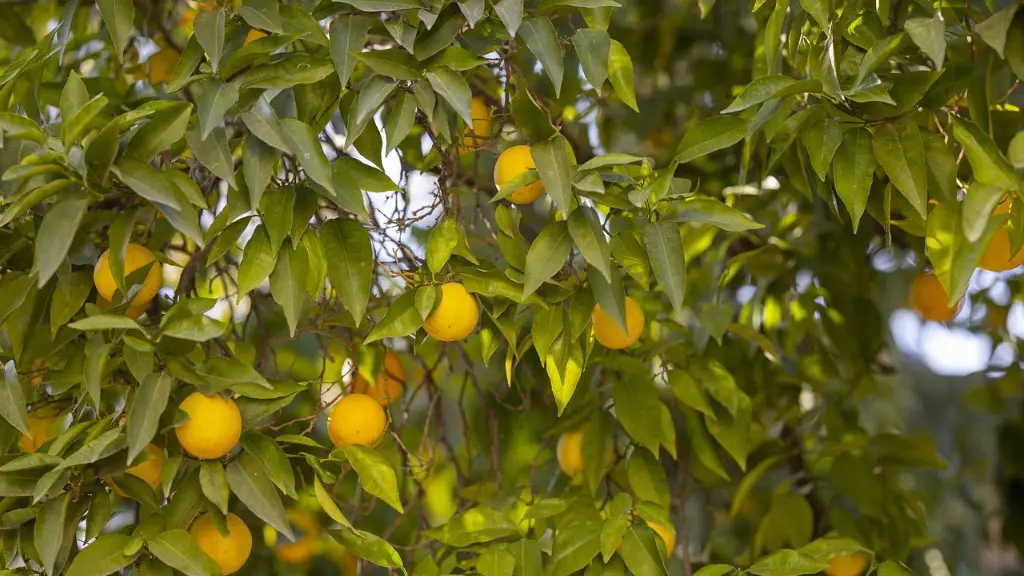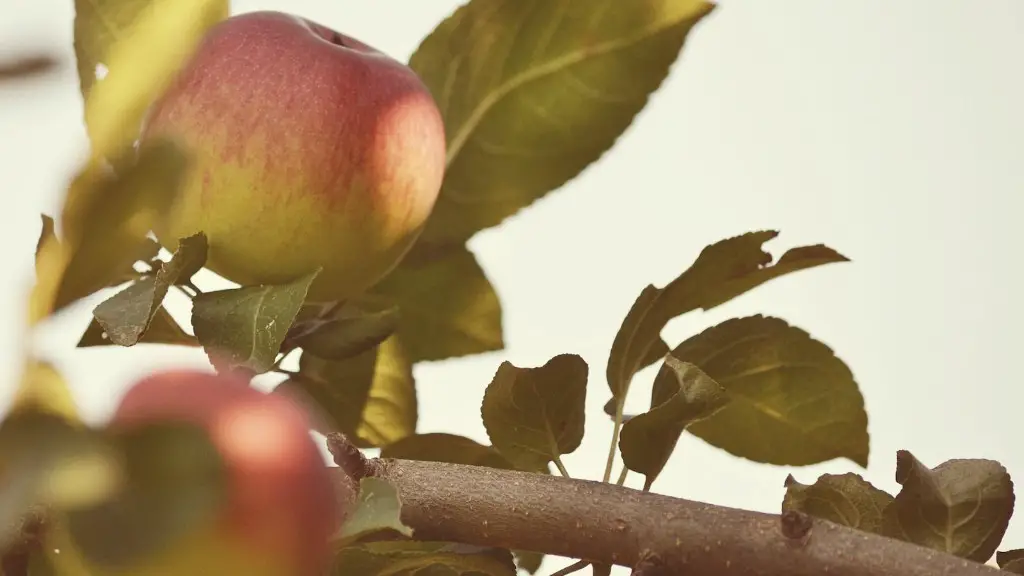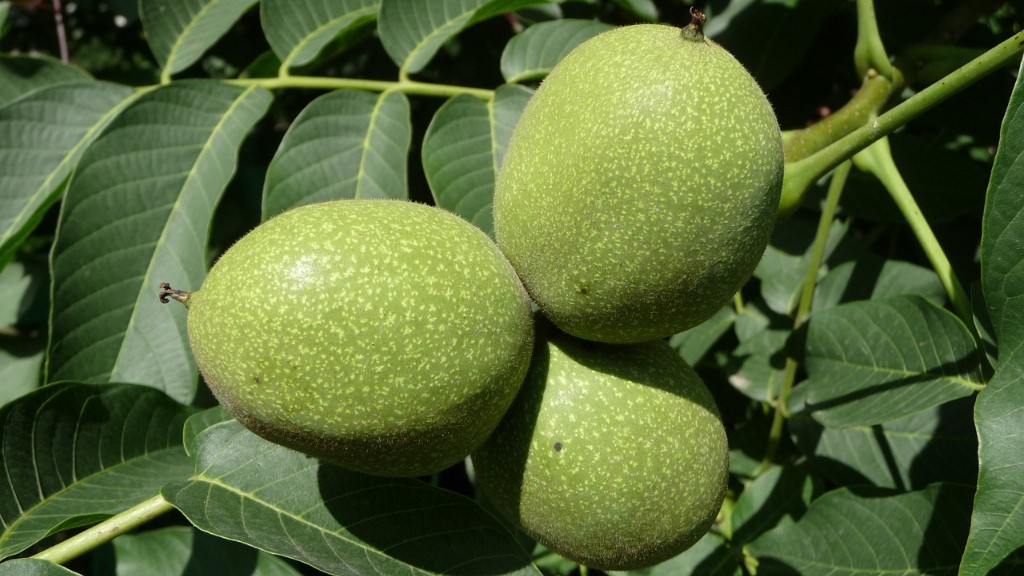Looking to take care of your lemon tree? Trimming is an important part of ensuring the trees stay healthy and produce a bountiful harvest. Here are some tips on how to trim a lemon tree correctly and safely.
Start by inspecting each shoot, both for signs of disease and to assess its potential for growth. If a shoot is diseased or dead, it’s best to remove it right away. Use sterilized clippers or scissors to cut off any diseased or dead branches. Also inspect the branches for any crossing or rubbing branches and remove the weaker one to encourage the healthiest growth.
Next, prune away any branches or shoots that are too close to the ground. The branches should be kept at least two to three feet off the ground. These branches often trap moisture and can become infected, so it’s best to remove them. Also make sure to trim away any jagged or uneven parts of the tree branches.
At this point, it’s also a good idea to thin out the leaves. Thinning is important for lemon trees because it allows more light and air to flow in, which helps stimulate healthy growth. To thin the leaves, simply clip away any branches that are too close together.
Finally, you can use pruning shears to trim back the main branches. This should be done with care to avoid overpruning. To keep the tree aesthetically pleasing, it’s also a good idea to shape the tree. Prune the shape of the tree with consideration for its growing season, and take care not to make the pruning too severe.
In conclusion, trimming a lemon tree correctly is essential for ensuring healthy growth and production of a bountiful harvest. By inspecting and cutting away diseased or dead branches, pruning away close to the ground branches, thinning the leaves, and carefully pruning the main branches, you’ll be sure to successfully maintain your lemon tree.
Lemon Trees And Fertilization
Fertilizing a lemon tree is an essential part of keeping it healthy and well-nourished. Fertilizers should be used sparingly and applied regularly throughout the growing season as needed. Before adding any fertilizer to the soil, it’s important to know the tree’s current nutrient levels. This can be done by taking a soil sample and sending it to a lab for testing.
Once you’ve received the results, use a fertilizer that contains the nutrients that your soil is lacking. Typically, nitrogen- and potassium-containing fertilizers are best for lemon trees. When adding fertilizer, either work it into the topsoil or spread it around the tree’s drip line. Take care not to overapply, as too much fertilizer can lead to burning the plant.
You can also add soil amendments like wood ash, greensand, and compost to the soil to give additional nutrients to the lemon tree. Additionally, applying a mulch layer around the tree’s base can help retain moisture and supply the tree with valuable nutrients.
When it comes to growing a healthy lemon tree, fertilization is essential. Ensure the tree gets the proper nutrition by periodically testing the soil, applying the right fertilizers, and adding soil amendments. Not only will these steps promote strong growth, but they’ll also lead to a fruitful harvest.
Watering A Lemon Tree
Watering is a fundamental component to growing a healthy lemon tree. The trees need about 1-2 inches of water a week to stay in optimal health. It is crucial to keep the soil evenly moist, as over- or underwatering can lead to harmful consequences. It’s also important to direct the water at the soil and not on the tree’s leaves, as this can promote fungal growth.
In times of extreme heat or drought, you may need to water the tree more often. It’s best to give the tree plenty of water in these conditions and aim for about 4-5 inches of soil moisture per week. During these periods, it’s also important to watch for signs of stress, such as wilting leaves. If necessary, you can protect the tree from too much sunlight by using a shade cloth.
In summary, watering is key to keeping a lemon tree healthy. Make sure to keep the soil evenly moist and water at least 1-2 inches a week, increasing the amount in periods of extreme heat or drought. Water the soil and not the leaves, and watch for signs of stress. Implementing these steps will help to ensure the tree gets the moisture it needs.
Pest Prevention For Lemon Trees
Pest prevention is important for keeping lemon trees healthy. The trees are prone to insects and diseases, so it’s important to inspect them regularly and take preventative action when necessary. Signs that pests may be present include yellow leaves, weak or damaged branches, or holes in the leaves.
One way to prevent pests is to keep the trees clean and tidy. Clear out any dead leaves, branches, or twigs that may have accumulated at the base of the tree. This can help prevent any pests from nesting and spreading. Additionally, planting companion plants can help ward off pests, such as marigolds and nettles.
Insecticide can also be used to keep pests away from the trees. Before applying any insecticide, it’s important to identify what type of insect is causing the problem. Different pests require different treatments, so knowing exactly what you’re dealing with is key. After this step, use a pesticide that is safe to use on edible crops and follow the label instructions carefully.
In conclusion, pest prevention is important to help keep lemon trees healthy. Regularly inspect the tree, keep its base clear, plant companion plants, and use insecticides when necessary. Following these steps will help to protect the lemon tree from potential pests and diseases.
Fruit Harvest For Lemon Trees
Harvesting lemons from a lemon tree can be a rewarding experience. To ensure an optimal harvest, it’s important to watch out for any unripe or damaged fruits. Unripe lemons will not be juicy and will have a bitter taste, so pick early and leave some lemons on the tree when they’re still green.
To pick the lemons, use scissors or clippers to snip the fruits at their base when they appear ripe. Be sure to handle the fruit gently to avoid bruising it, as this can damage the flavour. Avoid shaking the tree or tugging the fruit, as this can cause the entire branch to come off and damage the tree.
You should also consider which fruits are ready to be harvested. One way to do this is to wait for the lemons to reach full size. They should also be bright yellow and heavy for their size. Also take care to avoid harvesting too much fruit at one time, as this can add stress to the tree.
An optimal harvest is possible by watching out for unripe and damaged fruits, using scissors or clippers to pick the lemons, and avoiding shaking or tugging the fruit. These steps should help produce a plentiful harvest of juicy and flavourful lemons.



